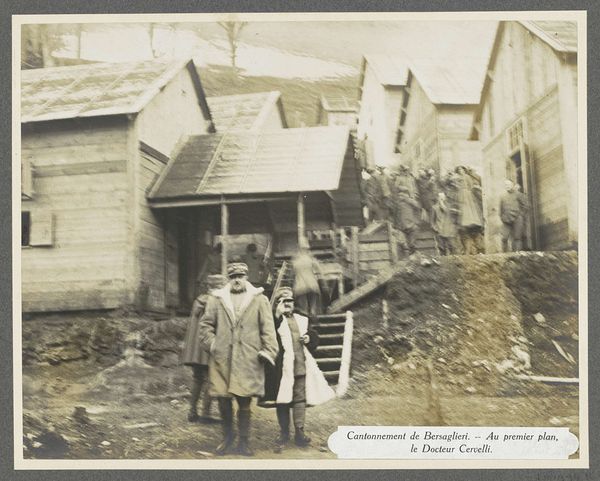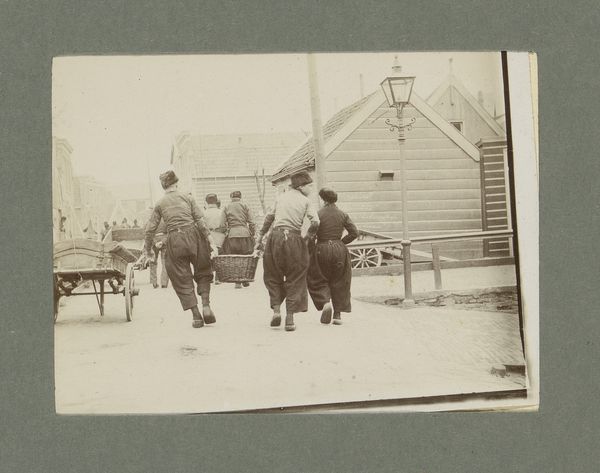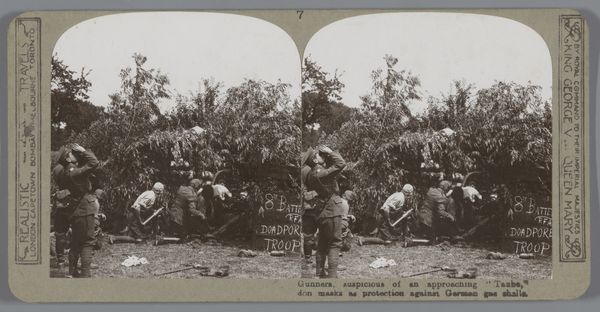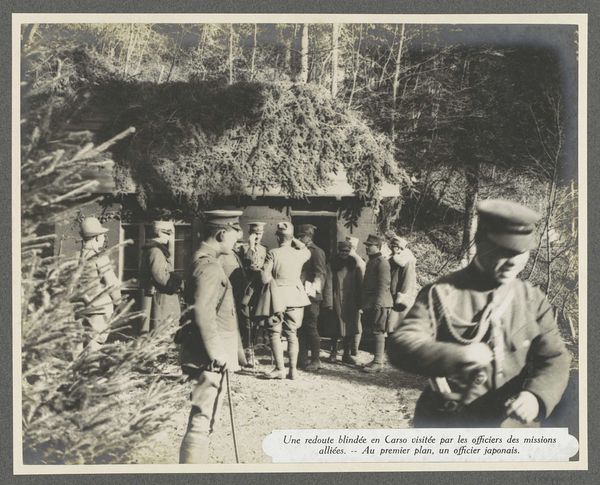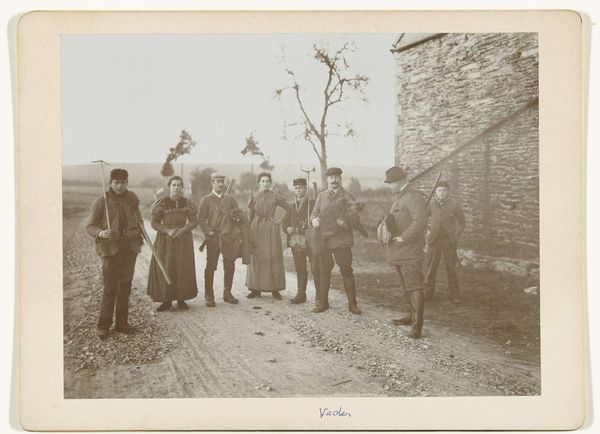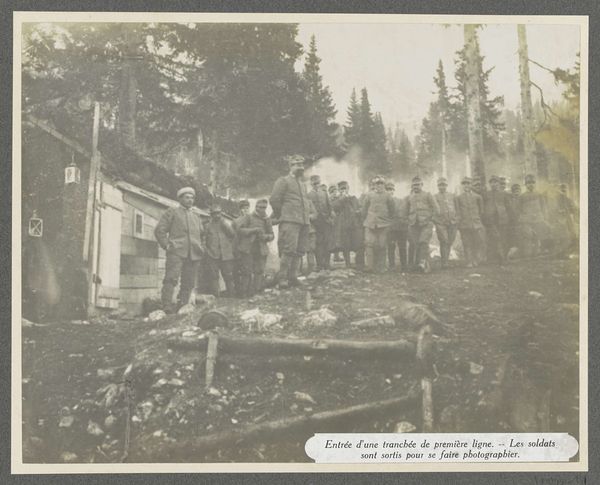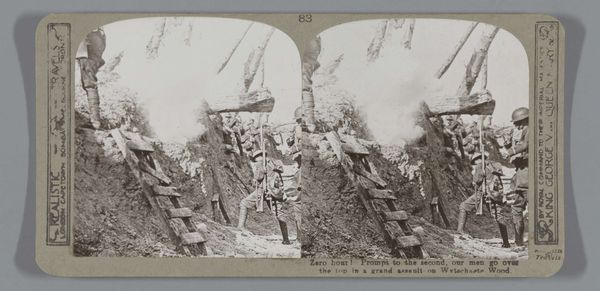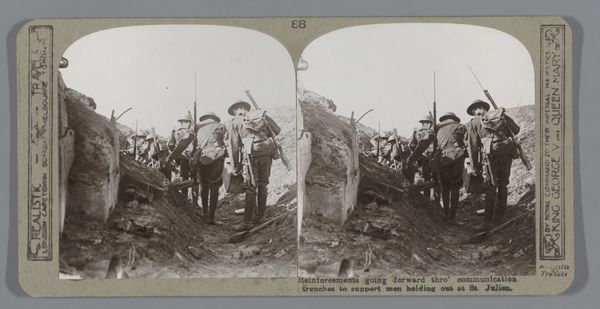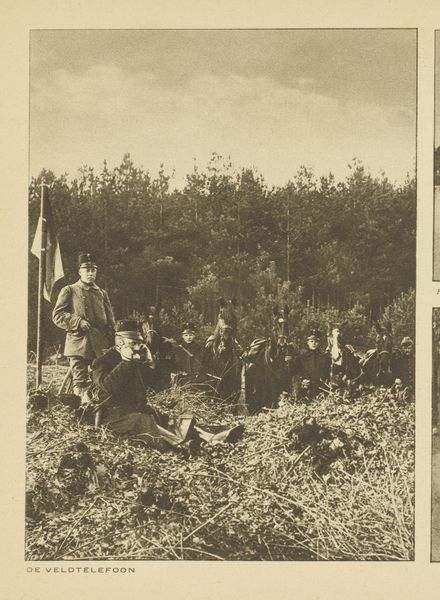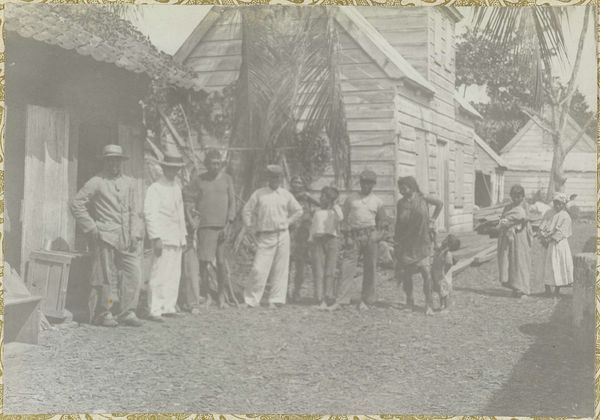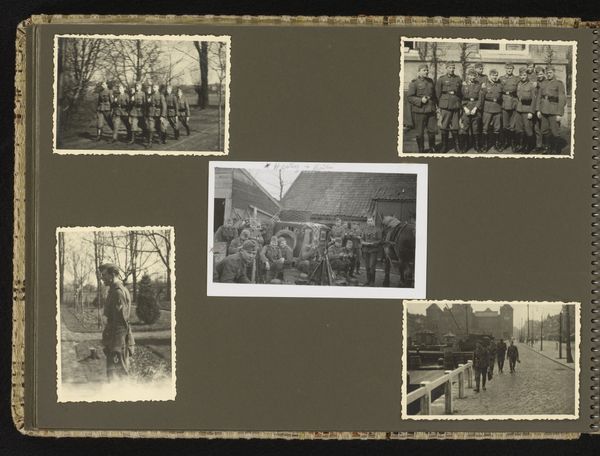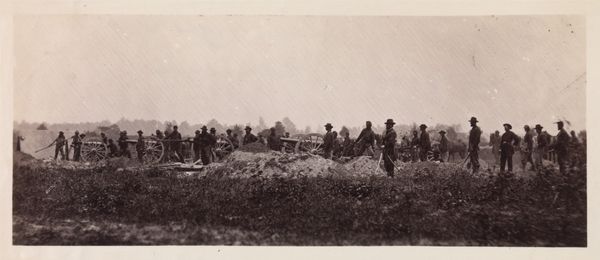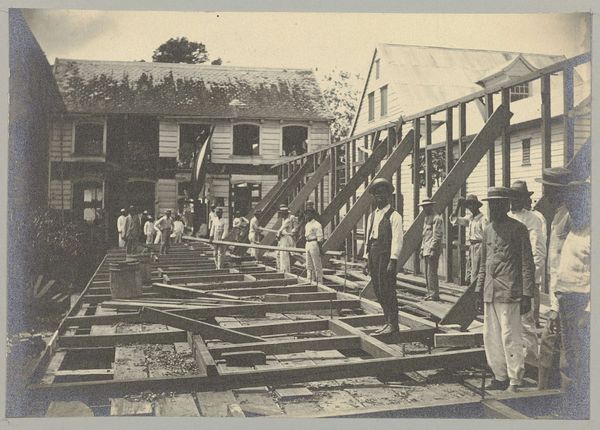
Bataljon van Italiaanse Bersaglieri voor hun demonteerbare barakken in de Dolomieten 1916
0:00
0:00
photography, gelatin-silver-print
#
portrait
#
appropriation
#
landscape
#
archive photography
#
photography
#
historical photography
#
gelatin-silver-print
#
genre-painting
Dimensions: height 220 mm, width 280 mm
Copyright: Rijks Museum: Open Domain
Editor: This gelatin silver print from 1916, titled "Bataljon van Italiaanse Bersaglieri voor hun demonteerbare barakken in de Dolomieten," shows a company of soldiers. I’m immediately struck by the raw materiality of the barracks, the dirt, and even the soldiers' uniforms. What stands out to you about the materials and how they speak to the context of the photograph? Curator: Well, consider the demountable barracks themselves. What were they made of? Probably wood, readily available but also signifying a temporary existence, hastily constructed to meet a dire need in wartime. This brings questions to my mind such as how does that temporary feel affect labor and psychology in the great war. Do these men believe what they fight for? Does it make fighting more or less dificult. And also how the material culture of war impacted how civilians were percieved and threated. Editor: That’s a fascinating point. The barracks' disposability really underscores the expendability of resources and, potentially, human life during wartime. Thinking about the soldiers' uniforms as material – were they mass-produced, standardized? What do they tell us about the industrialization of warfare? Curator: Exactly. These aren't bespoke tailored items, but mass-produced necessities of modern war, cogs in a larger machine. The photo offers glimpses into the military supply chain, hinting at vast industrial operations occurring behind the front lines and thus impacting what civilian life looks like in europe at this moment. Also if we put on a Gender perspective to this matter, how does female labor have helped this war, taking into acount that a big number of male population was involved in this global event? How did factories shifted from producing domestic goods to producing firearms for battle? It's all interconnected. Editor: It really makes you think about the hidden processes that enable war, beyond just the battlefield. I learned something new; thanks for your materialist perspective! Curator: Likewise. Seeing art through the lens of material and production brings forth hidden narratives.
Comments
No comments
Be the first to comment and join the conversation on the ultimate creative platform.
